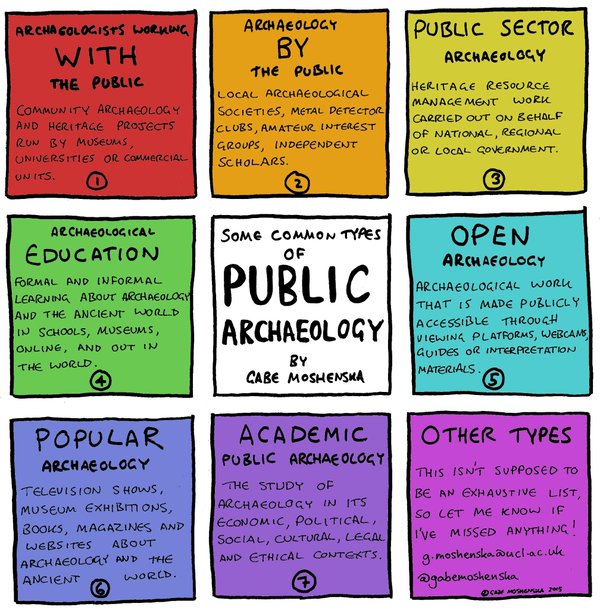Once when doing Archaeology in Belize, I got the question from a local worker that was participating in his community public archaeology; “ Why are you here?” He knew about the research taking place and how we were there to discover new findings of the Maya civilization. What he did not understand is why a person would fly over the lands and sea to study some region and culture that does not pertain to their own. This question remained with me since and I been trying to understand it myself. Back then I did not have an answer but now working at the Hidalgo County Public Cemetery Project (HCPCP) I seem to find the archaeologist’s motive. We are here to help both us and the community, to gain new knowledge, preserve and enjoy the cultures. Or as Ervin states, we are here to create “ a greater awareness of community members’ own resources’ (Ervin 2000: 200).” In relation, two great writers, Fred McGhee and John Jameson, go into detail of how to achieve public archaeology.
McGhee’s 2012 work consists of using the Participatory Action Research (PAR) whereas Jameson’s older work of 2003 speaks of public education and outreach. Firstly, what PAR consist of is to “transform communities for the better and where positive social change is an explicit goal (McGhee 2012: 213).” PAR is considered to be revolutionary for its goal is to commit to the region’s political struggles in order to become part of the community’s collective memory, build solidarity and knowledge (McGhee 2012: 218-219). This is done by having the community work hand in hand with the archaeologists. Differently, Jameson aims for the archeologist to work more with instructors, officials, leaders rather than the common locals (Jameson 2003: 158). The first one seems to be more directed towards the community self-learning while the other view is to first spread towards a smaller group of people that can then teach the community. This difference in public archaeology approach shows how ethical principles are becoming more embraced and understandable over time. Now that the world has more connections, like social media, it is easier to see and learn from the different and similar ethics. Also, we have become more racially mixed and even live next to multi-diverse cultures. This will further make anthropology researchers closer to the people. In fact, the HCPCP has been building their work to be available to the public by providing the resources online like https://hcpcp.wordpress.com/ and being published in the University of Texas at Rio Grande Valley (UTRGV) press release and the main end goal to make a publicly accessible database of each individual grave. What seems to be missing is for the project to be even more open to the public by sending out volunteer opportunities to the community. There does seem to be a number of people approaching the project participants (UTRGV students) that are interested in what we are doing in the area. Maybe providing them with a flyer of the project they could explore the website and contact us for more information or even suggest to help out with the project. I believe that can make the project become more PAR.
It doesn’t matter where archaeology takes places, what matters is the resources that are contributed to the people. Therefore, the work that we are doing at the HCPCP will help the community and others that have moved farther away to find their relatives. What we gain from here is giving the available resources to the public as well as better understanding the cemeteries cultural aspects. Here the cemeteries preservation has been reignited and hopefully the graves cultural notions will become alive as how the other nearby graves stand. I really like Jameson’s explanation that the ultimate goal of archaeology is “to improve people’s lives by helping them to enjoy and appreciate their cultural heritage (Jameson 2003: 161).”
